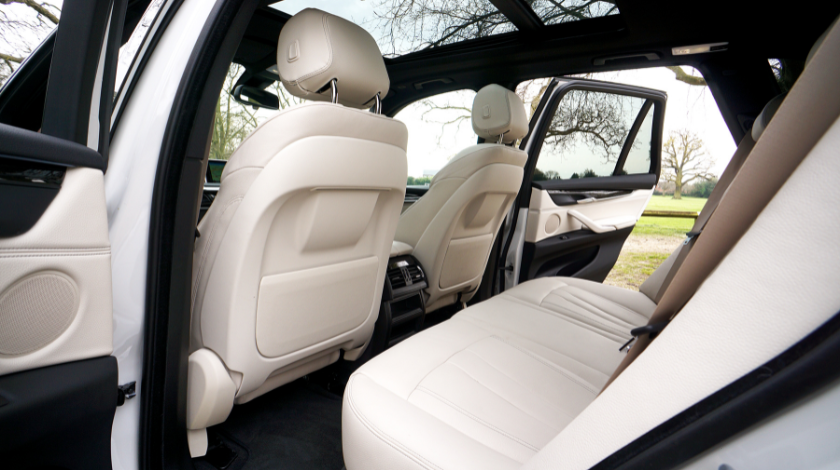P0492 2001 bmw x5 3.0 m54

The 2001 BMW X5 3.0, powered by the M54 inline-six engine, is a celebrated vehicle known for its blend of luxury, performance, and versatility. However, like any complex machine, it can encounter issues that trigger diagnostic trouble codes (DTCs). One such code is P0492, which indicates a problem with the Secondary Air Injection (AIR) System Insufficient Flow on Bank 2. This code is particularly relevant for the M54 engine, as it relies on the secondary air injection system to reduce emissions during cold starts. This article provides an in-depth exploration of the P0492 code, covering its definition, causes, symptoms, diagnostic procedures, repair options, and preventive measures. Aimed at BMW owners, DIY enthusiasts, and professional mechanics, this guide will help you understand and resolve the P0492 code effectively.
Table of Contents
ToggleUnderstanding the P0492 Code
What is the P0492 Code?
The P0492 code is a generic OBD-II diagnostic trouble code that stands for “Secondary Air Injection System Insufficient Flow (Bank 2).” In the context of the 2001 BMW X5 3.0 with the M54 engine, it indicates that the powertrain control module (PCM) has detected insufficient airflow in the secondary air injection system on Bank 2, which is the side of the engine that does not contain cylinder #1 (typically the left side in the M54 engine configuration).
The secondary air injection system is an emissions control mechanism designed to reduce hydrocarbon (HC) and carbon monoxide (CO) emissions during cold engine starts. It injects fresh air into the exhaust manifold to promote the oxidation of unburned fuel, helping the catalytic converter reach its operating temperature (light-off temperature) more quickly. The system operates for approximately 60-90 seconds after a cold start, depending on ambient conditions.
When the PCM detects that the airflow on Bank 2 is below the expected threshold, it triggers the P0492 code and illuminates the Check Engine Light (CEL). This issue can lead to increased emissions, reduced engine performance, and potential failure during emissions testing.
The Role of the Secondary Air Injection System in the M54 Engine
The M54 engine, a 3.0-liter inline-six used in the 2001 BMW X5, is equipped with a sophisticated secondary air injection system. Key components include:
-
Secondary Air Pump: An electric pump that supplies fresh air to the exhaust system.
-
Secondary Air Injection Valve (Check Valve): A one-way valve that allows air to flow into the exhaust manifold while preventing exhaust gases from flowing back into the system.
-
Vacuum Control Valve (Solenoid): Controls the vacuum that opens the secondary air injection valve.
-
Vacuum Lines: Hoses that deliver vacuum pressure to the check valve.
-
Air Lines and Passages: Tubes that channel air from the pump to the exhaust manifold.
-
Mass Air Flow Sensor (for AIR system monitoring): Measures the airflow to ensure proper system operation.
The system is activated during cold starts when the engine runs on a rich fuel mixture, which increases HC and CO emissions. By injecting oxygen-rich air into the exhaust, the system facilitates the combustion of these pollutants, reducing emissions and aiding catalytic converter efficiency.
Symptoms of P0492 in a 2001 BMW X5 3.0 M54
When the P0492 code is triggered, drivers may notice several symptoms that indicate an issue with the secondary air injection system. These include:
-
Check Engine Light (CEL): The most obvious symptom is the illumination of the CEL on the dashboard. This is the PCM’s way of alerting the driver to a detected fault.
-
Rough Idle During Cold Starts: The engine may idle inconsistently or roughly, especially during the first few minutes after starting the vehicle in cold conditions.
-
Reduced Engine Performance: Drivers may experience sluggish acceleration or a lack of power due to improper air-fuel mixture caused by the malfunctioning AIR system.
-
Increased Emissions: The vehicle may produce higher levels of HC and CO, potentially causing it to fail emissions tests.
-
Unusual Noises: A failing secondary air pump may produce buzzing or whining noises, or there may be hissing sounds from vacuum leaks.
-
Decreased Fuel Efficiency: The engine may compensate for the lack of proper airflow, leading to increased fuel consumption.
In some cases, the vehicle may not exhibit noticeable drivability issues, but the CEL and potential emissions test failures necessitate addressing the problem promptly.
Common Causes of P0492 in a 2001 BMW X5 3.0 M54
The P0492 code can be triggered by various issues within the secondary air injection system. Understanding these causes is crucial for effective diagnosis and repair. Common culprits include:
-
Faulty Secondary Air Pump: The air pump may fail due to worn bearings, electrical issues, or internal damage, resulting in insufficient airflow.
-
Blocked or Disconnected Vacuum Lines: Vacuum hoses that control the secondary air injection valve may become cracked, disconnected, or clogged, preventing the valve from opening properly.
-
Malfunctioning Secondary Air Injection Valve (Check Valve): The check valve may become stuck, corroded, or clogged with carbon deposits, restricting airflow to the exhaust manifold.
-
Faulty Vacuum Control Valve (Solenoid): The solenoid that regulates vacuum pressure to the check valve may fail, causing the valve to remain closed.
-
Clogged Air Lines or Passages: Debris, carbon buildup, or blockages in the air lines or exhaust manifold passages can impede airflow.
-
Electrical Issues: Damaged wiring, corroded connectors, or a faulty relay (e.g., the SAP relay) can disrupt power to the air pump or solenoid.
-
Clogged Secondary Air System Filter: A blocked air filter can restrict the pump’s ability to draw in sufficient air.
-
Faulty Mass Air Flow Sensor (for AIR system): A malfunctioning sensor may incorrectly report airflow, causing the PCM to trigger the P0492 code.
In the 2001 BMW X5 3.0 M54, a common issue reported by owners is a disconnected or rotted vacuum line, particularly the one connecting the vacuum control valve to the check valve, as noted in diagnostic videos and forums.
Diagnosing the P0492 Code
Diagnosing the P0492 code requires a systematic approach to identify the root cause. Below is a step-by-step guide tailored for the 2001 BMW X5 3.0 M54.
Step 1: Scan for Codes
-
Tools Needed: OBD-II scanner (e.g., BimmerCode, Carly, or a professional-grade scanner like ISTA/D).
-
Connect the scanner to the OBD-II port (located under the dashboard) and retrieve the P0492 code. Check for additional codes (e.g., P0491 for Bank 1 issues or P1345 for misfire issues), as they may provide context.
-
Clear the codes and drive the vehicle to see if P0492 reappears, confirming an active issue.
Step 2: Visual Inspection
-
Inspect Vacuum Lines: Check the vacuum hoses, particularly the line connecting the vacuum control valve to the secondary air injection valve. Look for cracks, disconnections, or rot. A common issue on the M54 engine is a broken vacuum line behind the intake manifold.
-
Check Air Lines and Passages: Examine the air lines from the pump to the exhaust manifold for blockages or damage.
-
Inspect Electrical Connections: Look for corroded or loose connectors at the air pump, solenoid, and relay.
Step 3: Test the Secondary Air Pump
-
Tools Needed: Multimeter, 12V power source (optional).
-
Locate the secondary air pump (typically near the front of the engine bay, under the intake manifold).
-
Test the pump by applying 12V power directly to its terminals. If it runs smoothly and produces airflow, it is likely functional. If it buzzes or fails to operate, it may need replacement.
-
Check the SAP relay, located near the windshield washer reservoir in some E53 models, by bridging pins 30 and 87 to see if the pump activates.
Step 4: Test the Secondary Air Injection Valve
-
Tools Needed: Vacuum pump tester.
-
Remove the check valve (located near the exhaust manifold) and inspect for carbon buildup or sticking. Clean with brake cleaner or replace if damaged.
-
Apply vacuum to the valve using a vacuum pump tester to ensure it opens and closes properly.
Step 5: Test the Vacuum Control Valve
-
Tools Needed: Scan tool, multimeter.
-
Activate the solenoid using a scan tool to check if it opens the check valve. If no response, test the solenoid’s electrical connections with a multimeter.
-
Verify vacuum pressure from the intake manifold to the solenoid.
Step 6: Check the Air Filter and Mass Air Flow Sensor
-
Inspect the secondary air system filter for clogs and replace if necessary.
-
Test the mass air flow sensor (if applicable) to ensure it accurately measures airflow.
Step 7: Clear Codes and Test Drive
-
After addressing potential issues, clear the P0492 code using the OBD-II scanner.
-
Perform a cold start and drive the vehicle to verify that the code does not return.
Tools and Resources
-
OBD-II Scanner: Essential for reading and clearing codes.
-
Multimeter: For testing electrical components.
-
Vacuum Pump Tester: For checking vacuum-operated components.
-
BMW Service Manuals: Access factory service manuals for detailed diagrams and procedures.
-
Online Forums and Videos: Resources like BimmerFest and YouTube tutorials provide valuable insights from other BMW owners.
Repairing the P0492 Code
Once the cause is identified, repairs can range from simple fixes to component replacements. Below are common repair solutions for the 2001 BMW X5 3.0 M54.
1. Replace Faulty Vacuum Lines
-
Cost: $10–$50 for replacement hoses.
-
Procedure: Replace any cracked or disconnected vacuum lines, particularly the one behind the intake manifold. Use high-quality, heat-resistant silicone hoses to prevent future issues. Secure connections with zip ties or clamps.
-
Time: 30–60 minutes.
2. Clean or Replace the Secondary Air Injection Valve
-
Cost: $50–$150 for a new valve; cleaning is free.
-
Procedure: Remove the check valve, clean it with brake cleaner to remove carbon deposits, and test its operation. If cleaning doesn’t resolve the issue, replace the valve.
-
Time: 1–2 hours.
3. Replace the Secondary Air Pump
-
Cost: $200–$400 for a new pump.
-
Procedure: If the pump is faulty, replace it with an OEM or high-quality aftermarket unit. Ensure proper electrical connections and test after installation.
-
Time: 1–3 hours.
4. Replace the Vacuum Control Valve (Solenoid)
-
Cost: $50–$100.
-
Procedure: Replace the solenoid if it fails to activate or deliver vacuum pressure. Test the new solenoid with a scan tool.
-
Time: 1 hour.
5. Repair Electrical Issues
-
Cost: $20–$100 for wiring or relay replacement.
-
Procedure: Repair or replace damaged wiring, connectors, or the SAP relay. Test electrical continuity with a multimeter.
-
Time: 1–2 hours.
6. Clear Blockages in Air Lines
-
Cost: Minimal (cleaning supplies).
-
Procedure: Remove and clean air lines and passages using compressed air or a pipe cleaner. Ensure no debris remains in the system.
-
Time: 1–2 hours.
Estimated Repair Costs
The total cost to fix P0492 on a 2001 BMW X5 3.0 M54 typically ranges from $300 to $900, depending on the cause, parts quality, and labor rates. DIY repairs can significantly reduce costs, while dealership or professional mechanic services may be higher (labor rates: $80–$150/hour).
DIY vs. Professional Repair
-
DIY: Suitable for those with mechanical experience and access to tools. Common fixes like replacing vacuum lines or cleaning the check valve are straightforward. Online resources and forums (e.g., Xoutpost, BimmerFest) provide detailed guides.
-
Professional Repair: Recommended for complex issues (e.g., electrical faults or pump replacement) or if diagnostic tools are unavailable. A professional mechanic can ensure accurate diagnosis and repair, especially for emissions compliance.
Preventive Maintenance
To avoid recurring P0492 issues, consider the following maintenance tips:
-
Regular Inspections: Periodically check vacuum lines, air lines, and electrical connections for wear or damage, especially in older vehicles like the 2001 X5.
-
Use Quality Parts: Opt for OEM or high-quality aftermarket components to ensure durability and compatibility.
-
Clean Components: Regularly clean the secondary air injection valve and air filter to prevent carbon buildup or clogs.
-
Monitor Cold Start Performance: Pay attention to rough idling or unusual noises during cold starts, as these may indicate early AIR system issues.
-
Schedule Emissions Testing: Regular emissions tests can catch AIR system problems before they trigger codes or cause failures.
Real-World Insights from BMW Owners
BMW forums and YouTube tutorials provide valuable real-world insights into P0492 issues on the 2001 X5 3.0 M54. For example:
-
A user on Xoutpost reported persistent P0491 and P0492 codes despite replacing the check valve and verifying the pump’s operation. The issue was traced to a faulty SAP relay, which was resolved by bridging pins 30 and 87 to test the pump.
-
A YouTube tutorial by Flat Rate Mechanic identified a broken vacuum line behind the intake manifold as the cause of P0491 and P0492, emphasizing the importance of checking vacuum connections.
-
Another owner on BimmerFest noted that cold weather (around 35°F) prevented the air pump from activating, suggesting temperature-related issues with the system’s relay or solenoid.
These anecdotes highlight the importance of thorough diagnosis and checking common failure points like vacuum lines and relays.
Impact of P0492 on Vehicle Operation
While the P0492 code primarily affects emissions, it can have broader implications:
-
Emissions Compliance: A malfunctioning AIR system may cause the vehicle to fail emissions tests, which is critical in regions with strict regulations.
-
Engine Health: Prolonged issues may lead to carbon buildup in the exhaust system, potentially affecting catalytic converter performance.
-
Drivability: Although not always noticeable, rough idling or reduced performance can impact the driving experience, especially during cold starts.
It is generally not recommended to drive with an active P0492 code, as it can lead to increased emissions and potential long-term engine damage.
Conclusion
The P0492 code on a 2001 BMW X5 3.0 M54 indicates an issue with the secondary air injection system’s airflow on Bank 2, a critical component for emissions control. Common causes include faulty vacuum lines, a malfunctioning air pump, a stuck check valve, or electrical issues. Symptoms range from a Check Engine Light to rough idling and increased emissions. Diagnosing the issue involves using an OBD-II scanner, inspecting vacuum and air lines, and testing components like the air pump and solenoid. Repairs can be DIY-friendly for simple fixes like vacuum line replacement or may require professional intervention for complex electrical or component failures. Costs typically range from $300 to $900, depending on the repair scope and labor rates.
Preventive maintenance, such as regular inspections and using quality parts, can minimize the risk of recurring issues. By addressing the P0492 code promptly, owners can restore their X5’s performance, ensure emissions compliance, and maintain the vehicle’s renowned driving experience. For 2001 BMW X5 owners, understanding and resolving P0492 is a manageable task with the right tools, knowledge, and resources, ensuring this luxury SUV continues to perform at its best.
Recommended For You
Spread the loveWhen you come across the word “Boisrois,” it feels mysterious, almost like a blend of history, tradition, and
Spread the loveThe Mississippi River, often referred to as “Reka Mississippi” in many Slavic and Eastern European languages (since “reka”
Spread the loveWhen you hear the word “Vladivostocka”, your mind might jump to Eastern Europe, Russia, or even the Pacific
Browse by Category
- Travel
- Technology & Gadgets
- Sports & Games
- Software
- Shopping
- Reviews
- Real Estate
- Numerology
- News
- Make Money
- Lifestyle
- Law
- Home Improvement
- Health
- Gardening
- Games
- Finance
- Entertainment
- Education
- Digital Marketing
- Diet and Fitness
- Dating
- Construction
- Celebrity
- Career and Jobs
- Business
- blog
- Angel Number



